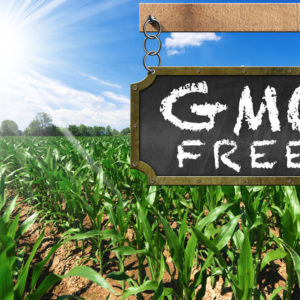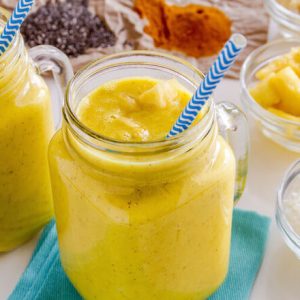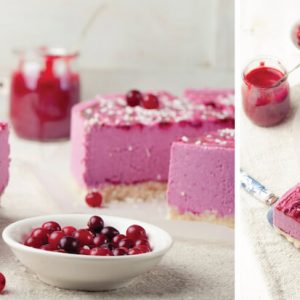
Honeybees have been on the decline for decades, due to disease, pesticides and climate change. Bees and other pollinating insects play an essential role in the ecosystem, with over a third of all food depending on their pollination. Without pollinators, our world would look incredibly bleak.
A study recently published in the journal Insect and Conservation Diversity used local museum records to compare changes in the wild bee community in New Hampshire over the span of 125 years (1891-2016). They found a dramatic decline of 14 wild bee species that are important for the pollination of major local crops (1).
This isn’t the only study that has demonstrated the clear message that our bee populations are on a steep decline. For this reason, Virginia started up their own Beehive Distribution Program. But before we get into that, let’s take a look at the top threats to some of our favorite pollinators.
What is Killing The Bees and Other Pollinators?
The loss of biodiversity due to monocultures (like lawns and other agricultural operations), along with the use of bee-killing pesticides are particular threats for honeybees and other wild pollinators. These aren’t the only threats. Herbicides, climate change, parasites and pathogens, as well as industrial practices are also harmful for all bee species.
We can start with the most harmful of all: bee-killing pesticides.
Neonicotinoid Pesticides
Neonicotinoid pesticides are some of the worst offenders of them all. More than a decade ago, bee farmers in North America and Europe started reporting unusually high losses of bees. Researchers started to link these deaths to neonicotinoids, a toxic pesticide that gets absorbed by the plants they are sprayed on, and become present in the pollen and nectar of those plants (thus making them toxic to bees and other pollinators).
A task force at the International Union for Conservation of Nature in 2017 updated a comprehensive review of over 1,100 peer-reviewed research studies on neonicotinoids and concluded that there is no doubt that they are harmful to bees.
Neonicotinoids and other insecticides affect bees at both the individual and colony level. The long-term, low-dose effects of insecticides on bees are categorized as follows (2):
1) Physiological Effects: occur on multiple levels, like the time it takes to reach adulthood (dysfunctional developing, including in larvae and queens), and the rate of malformation of cells inside the hive.
2) Perturbation of The Foraging Pattern: negative effects on the ability of a bee to properly navigate (like getting lost when coming back to the hive after foraging), and impairment of learning ability (olfactory — smelling-memory, essential in a bee’s behavior).
3) Interference with Feeding Behavior: through repellent, antifeedant, or reduced olfactory capacity effects.
4) Impacts of Neurotoxic Pesticides on Learning Processes: the inability to recognize certain flowers and their own nest, and having skewed spatial orientation.
We must not forget that the pollen bees collect is also their main protein source. Unfortunately, this pollen can contain high levels of multiple pesticide residues. As one study has concluded: “Surviving on pollen with an average of seven different pesticides seems likely to have consequences” (3).
The list of bee-harming pesticides includes: imidacloprid, thiamethoxam, clothianidin, fipronil, chlorpyriphos, cypermethrin, and deltamethrin.
These seven chemicals are all widely used in Europe (and the United States), and at concentrations that are known to acutely affect bees (with the exception of France, who has recently banned the use of all neonicotinoid pesticides on their crops).
Monocultures
Monoculture is the agricultural practice of producing or growing a single crop, plant, or livestock species. They are not only unnatural, but they’re sustained with the application of high amounts of fertilizers, pesticides and heavy machinery. They result in a lack of biodiversity (like biodiverse landscapes with emphasis on native plant growth) within and around croplands, and limit the amount of food that pollinators have access to (4).
Monocultures can leave bees hungry, since there are not enough blooming flowers, or only one kind of blooming flower. Herbicides reduce the diversity of wild plants around farms, and expansion of agriculture removes field margins, borders and hedges that hold a diversity of plants around farms. As a result, bees are not able to feed their offspring.
Parasites & Pathogens
Parasitic mites like Varroa destructor (5) is an invasive species from Asia that has spread almost globally. It feeds on the blood of the bee and spreads from hive to hive. This mite does not only weaken the bees, but it can also spread viral diseases and bacteria. If left uncontrolled, it will often lead to colony collapse disorder within three years.
The inability of bees to resist parasites, pathogens and the disease that follows is influenced particularly by their nutrition and exposure to toxic chemicals. Many studies have found that when bees are exposed to neonicotinoids and parasites, opposed to just parasites themselves, there is a significantly highly mortality rate in the pesticide and parasite group than the parasite group alone (6).
Under natural circumstances, a bee colony would be able to rid themselves of the parasite, but when they become weakened and sick with pesticides, their ability to do so is greatly reduced.
Climate Change
Climate change is another factor for bee deaths around the world. Increase in temperatures, changes in rainfall patterns and more extreme weather events have major impacts on our pollinators. For example, climate change might modify flowering patterns or displace plants that were once a major food source for bees. It could also encourage flowers to bloom at a time that doesn’t sync up with the emergence of bees in the spring – a phenomena known as “season creep”.
Climate change may also lead to “the large-scale extinction of interactions which are responsible for a key ecosystem service, that of the pollination of plants.” (7).
Industrial Practices
Destructive practices that prevent bees from nesting in their natural habitat, plus the spraying of herbicides and pesticides make industrial agriculture one of the major threats to pollinator communities on a global scale. On the other hand, agriculture systems that work with biodiversity and without chemicals (like permaculture farms or other ecological farming systems) can greatly benefit our pollinators (both wild and managed).
Harmful agricultural practices like tillage, irrigation, and the removal of woody vegetarian can destroy nesting sites of wild pollinators. In fact, destructive agricultural practices such as these are thought to be the major cause of wild pollinator declines (8).
Beehive Distribution Program
In an effort to boost bee numbers, Virginia launched their new Beehive Distribution Program that provides free hives to any resident over the age of 18.
In an effort to boost bee numbers, Virginia launched a new program that provides free hives to any resident over the age of 18. They did so after erratic weather and a rainy spring led to a loss of over 60 percent of bee colonies in the commonwealth (9). In an average year, the rate of loss is around 30 to 40 percent, according to Keith Tignor, Virginia’s state apiarist.
On July 1st of 2018, Virginia launched their new program. Each applicant can receive three hives per year, while supplies last.
The beehive distribution program was suspended on July 30th of 2018 due to overwhelming demand of hives. The Department of Agriculture received 2,700 applications for hives in less than one month (at one point, requests were as often as about one per minute). The $125,000 in state funding was quickly maxed out, but the program is being offered again starting July 1st, 2019. Only hives are provided – bees are not included.
What Else You Can Do To Save the Bees
Aside from housing your own beehive in your backyard, there are many things you can do to help the bee populations in your area. If you don’t live in Virginia and don’t have access to the Beehive Distribution Program – don’t fret! You can get your own, too!
Here are some suggestions that you should take into consideration when trying to protect bee populations:
1. Don’t Spray
An important part of protecting our ecosystem (pollinators and other beneficial microorganisms alike) is by getting rid of all chemical contaminants. That means no pesticides or herbicides. If you must use these products, opt for natural alternatives instead.
Alternatively, if you’re fed up with your grass lawn and the major upkeep it requires to look green and lush, consider planting a clover lawn instead. Clover has a tendency to stay green, even in times of drought. Micro clover grows in very tight knit groups, so “dead” areas of your yard stay green in the warmer months. Clovers are also nitrogen-fixing, making them great natural fertilizers. Grass lawns mixed with clover will often be healthier and greener, because of these nitrogen-fixing properties.
2. Grow Native Plants
Growing native plants is another great way to encourage pollinators to come to your yard (and to also provide them with a steady food source). Bees are very aware of their surroundings. They will know when your yard has certain flowers they love. Their internal “foraging maps” if not interfered with by pesticides are updated daily, new blooms are promptly discovered and fading flowers are immediately abandoned. They know there is a sunflower patch half a mile southeast of their nest. Bees are incredibly intelligent.
So don’t feel discouraged if you believe the bees won’t find your nectar sources. Believe me, they will. If you don’t want to put a ton of work into growing flowers for bees, plan by planting a mixture of annuals and biannuals (even perennials like prairie crocus). Bees have good color vision. They especially like purple, blue, violet, white and yellow. Planting flowers of a single species in clumps about four feet in diameter instead of in scatterings will help the bees more easily find the types of flowers they love.
Here are just a few plant species that attract bees (see the full table here):
– Berries (like blueberry and blackberry and raspberry)
– Borage
– Catnip
– Chives
– Coneflower
– Cosmos
– Crocus
– Foxglove
– Hyssop
– Lavender
– Pumpkin
– Sunflower
– Yarrow
3. Support Local, Organic Farms
Supporting organic, ecologically sound farms makes sure that money isn’t given to larger agricultural corporations that use pesticides and herbicides and large machinery that rip up bee nests and destroy native flora and fauna.
Get to know the farmers you buy from and try to stress organic. Finding farmers who grow with the rules of permaculture in mind is even better. That way, you know the soil isn’t tilled and that lots of companion planting and preserving the well-being of the soil is of upmost importance.
4. Keep a Beehive In Your Yard
In addition to the above, you can also keep a beehive in your yard. If you live in Virginia, you’re in luck, because then you can take part in the Beehive Distribution Program. If not, beehives aren’t that hard to find for purchase, and can even be ordered online. While you will need to make an initial investment, the benefit is that you get your own bees and pollinators in your backyard! That means more fruit production if you have a garden, and a better ecosystem overall.
The Flow Hive is another option for those who don’t want to disturb the colony, while still having access to fresh honey.









interested in the beehives grant in va I have a 50 acre farm
I think they already sold out this year! Their program is very popular.